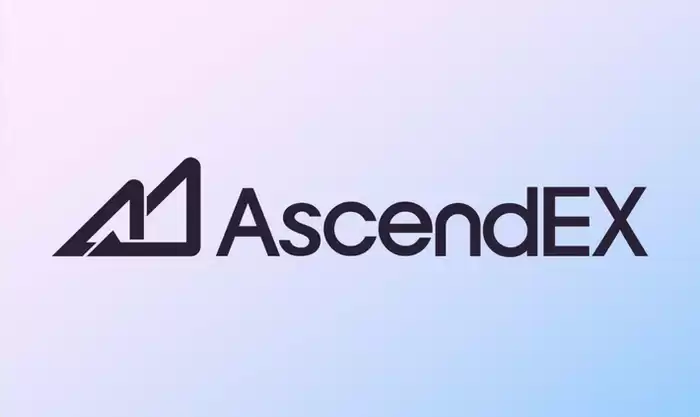-
 Bitcoin
Bitcoin $115100
1.27% -
 Ethereum
Ethereum $3675
2.71% -
 XRP
XRP $2.995
1.45% -
 Tether USDt
Tether USDt $1.000
0.02% -
 BNB
BNB $769.8
2.64% -
 Solana
Solana $168.0
3.25% -
 USDC
USDC $0.9999
-0.01% -
 TRON
TRON $0.3371
1.48% -
 Dogecoin
Dogecoin $0.2051
3.36% -
 Cardano
Cardano $0.7394
2.30% -
 Hyperliquid
Hyperliquid $38.15
0.42% -
 Stellar
Stellar $0.3966
-0.36% -
 Sui
Sui $3.486
2.93% -
 Chainlink
Chainlink $16.72
2.52% -
 Bitcoin Cash
Bitcoin Cash $568.0
4.36% -
 Hedera
Hedera $0.2440
2.59% -
 Ethena USDe
Ethena USDe $1.001
0.04% -
 Avalanche
Avalanche $22.16
2.06% -
 Litecoin
Litecoin $119.1
-0.73% -
 UNUS SED LEO
UNUS SED LEO $8.991
0.04% -
 Toncoin
Toncoin $3.232
-0.39% -
 Shiba Inu
Shiba Inu $0.00001233
2.82% -
 Uniswap
Uniswap $9.717
2.53% -
 Polkadot
Polkadot $3.664
1.85% -
 Dai
Dai $1.000
0.01% -
 Monero
Monero $281.2
-3.89% -
 Bitget Token
Bitget Token $4.350
1.55% -
 Cronos
Cronos $0.1428
5.07% -
 Pepe
Pepe $0.00001050
3.68% -
 Aave
Aave $262.3
3.54%
How to calculate leverage interest on AscendEX
Understanding leverage interest calculations on AscendEX is imperative for managing risks and optimizing trading strategies, as it entails determining the leverage ratio, identifying the margin currency, calculating the base interest rate, and forecasting total interest expenses.
Nov 30, 2024 at 01:24 am

Understanding Leverage Interest Calculations on AscendEX
Leverage trading involves borrowing funds to amplify trading positions, offering the potential for both enhanced profits and greater risks. Understanding how leverage interest is calculated is crucial for managing these risks effectively. This comprehensive guide will delve into the intricacies of leverage interest calculations on the AscendEX platform.
Step 1: Determine Leverage Ratio
The leverage ratio indicates the amount of borrowed funds relative to your initial margin. For example, a 10x leverage ratio implies that you have borrowed $9 for every $1 of your own funds. AscendEX offers varying leverage options, enabling traders to choose the most appropriate level for their risk tolerance and trading strategy.
Step 2: Identify Margin Currency
The margin currency is the asset used as collateral to secure the borrowed funds. AscendEX supports a wide range of cryptocurrencies as margin currencies, including popular ones like BTC, ETH, and USDT. The choice of margin currency can influence the interest rate and other trading conditions.
Step 3: Calculate Base Interest Rate
AscendEX charges a base interest rate on leveraged positions, which varies depending on the margin currency used. The platform provides a clear breakdown of interest rates for each margin currency on its website. These rates are subject to adjustments based on market conditions and platform policies.
Step 4: Determine Margin Utilization Factor
The margin utilization factor represents the percentage of your margin that is currently being utilized for leveraged trading. This factor is calculated by dividing the total amount of borrowed funds by your initial margin. A higher margin utilization factor indicates greater utilization of borrowed funds and potentially higher interest expenses.
Step 5: Calculate Daily Interest
The daily interest charge on your leveraged position is determined by multiplying the base interest rate by the leverage ratio and the margin utilization factor. This calculation provides a snapshot of the interest incurred over a 24-hour period.
Step 6: Forecast Total Interest
To estimate the total interest that you will incur over the entire duration of your leveraged position, multiply the daily interest charge by the number of days you anticipate holding the position. This calculation gives you an approximation of the overall interest expense you will pay.
Step 7: Adjust Interest Expenses
The interest charges associated with leveraged trading are dynamic and can fluctuate based on market conditions and the platform's policies. It is essential to monitor your interest expenses closely and adjust your trading strategy accordingly. AscendEX provides real-time updates on interest charges, allowing you to track your expenses and make informed decisions.
Disclaimer:info@kdj.com
The information provided is not trading advice. kdj.com does not assume any responsibility for any investments made based on the information provided in this article. Cryptocurrencies are highly volatile and it is highly recommended that you invest with caution after thorough research!
If you believe that the content used on this website infringes your copyright, please contact us immediately (info@kdj.com) and we will delete it promptly.
- TRX, RUVI, and CoinMarketCap: What's Buzzing in the Crypto Sphere?
- 2025-08-07 05:31:17
- Cryptos Primed for 5x Gains? Ozak AI Spotlights Hot Projects
- 2025-08-07 05:41:42
- Cryptos with ROI Potential: BlockDAG Leading the Charge
- 2025-08-07 04:50:14
- OZAK AI: Is This AI Product Poised for ChatGPT-Level Returns?
- 2025-08-07 03:30:13
- Cryptos to Watch: Cold Wallet's Rewarding Edge Over Tron
- 2025-08-07 04:12:40
- SEC, Liquid Staking, and Crypto: A New Dawn?
- 2025-08-07 03:30:13
Related knowledge

How to set and manage alerts on the Gemini app?
Aug 03,2025 at 11:00am
Understanding the Gemini App Alert SystemThe Gemini app offers users a powerful way to stay informed about their cryptocurrency holdings, price moveme...

How to use the Gemini mobile app to trade on the go?
Aug 04,2025 at 09:14am
Setting Up the Gemini Mobile AppTo begin trading on the go using the Gemini mobile app, the first step is installing the application on your smartphon...

How to set up a corporate account on Gemini?
Aug 05,2025 at 03:29pm
Understanding Gemini Corporate AccountsGemini is a regulated cryptocurrency exchange platform that supports both individual and corporate account crea...

How to change the email address associated with your Gemini account?
Aug 06,2025 at 08:49pm
Understanding the Importance of Updating Your Email on GeminiYour email address serves as a primary identifier and communication channel for your Gemi...

What to do if you forgot your Gemini password?
Aug 04,2025 at 03:42am
Understanding the Role of Passwords in Gemini AccountsWhen using Gemini, a regulated cryptocurrency exchange platform, your password serves as one of ...

What are the websocket feeds available from the Gemini API?
Aug 03,2025 at 07:43pm
Overview of Gemini WebSocket FeedsThe Gemini API provides real-time market data through its WebSocket feeds, enabling developers and traders to receiv...

How to set and manage alerts on the Gemini app?
Aug 03,2025 at 11:00am
Understanding the Gemini App Alert SystemThe Gemini app offers users a powerful way to stay informed about their cryptocurrency holdings, price moveme...

How to use the Gemini mobile app to trade on the go?
Aug 04,2025 at 09:14am
Setting Up the Gemini Mobile AppTo begin trading on the go using the Gemini mobile app, the first step is installing the application on your smartphon...

How to set up a corporate account on Gemini?
Aug 05,2025 at 03:29pm
Understanding Gemini Corporate AccountsGemini is a regulated cryptocurrency exchange platform that supports both individual and corporate account crea...

How to change the email address associated with your Gemini account?
Aug 06,2025 at 08:49pm
Understanding the Importance of Updating Your Email on GeminiYour email address serves as a primary identifier and communication channel for your Gemi...

What to do if you forgot your Gemini password?
Aug 04,2025 at 03:42am
Understanding the Role of Passwords in Gemini AccountsWhen using Gemini, a regulated cryptocurrency exchange platform, your password serves as one of ...

What are the websocket feeds available from the Gemini API?
Aug 03,2025 at 07:43pm
Overview of Gemini WebSocket FeedsThe Gemini API provides real-time market data through its WebSocket feeds, enabling developers and traders to receiv...
See all articles

























































































